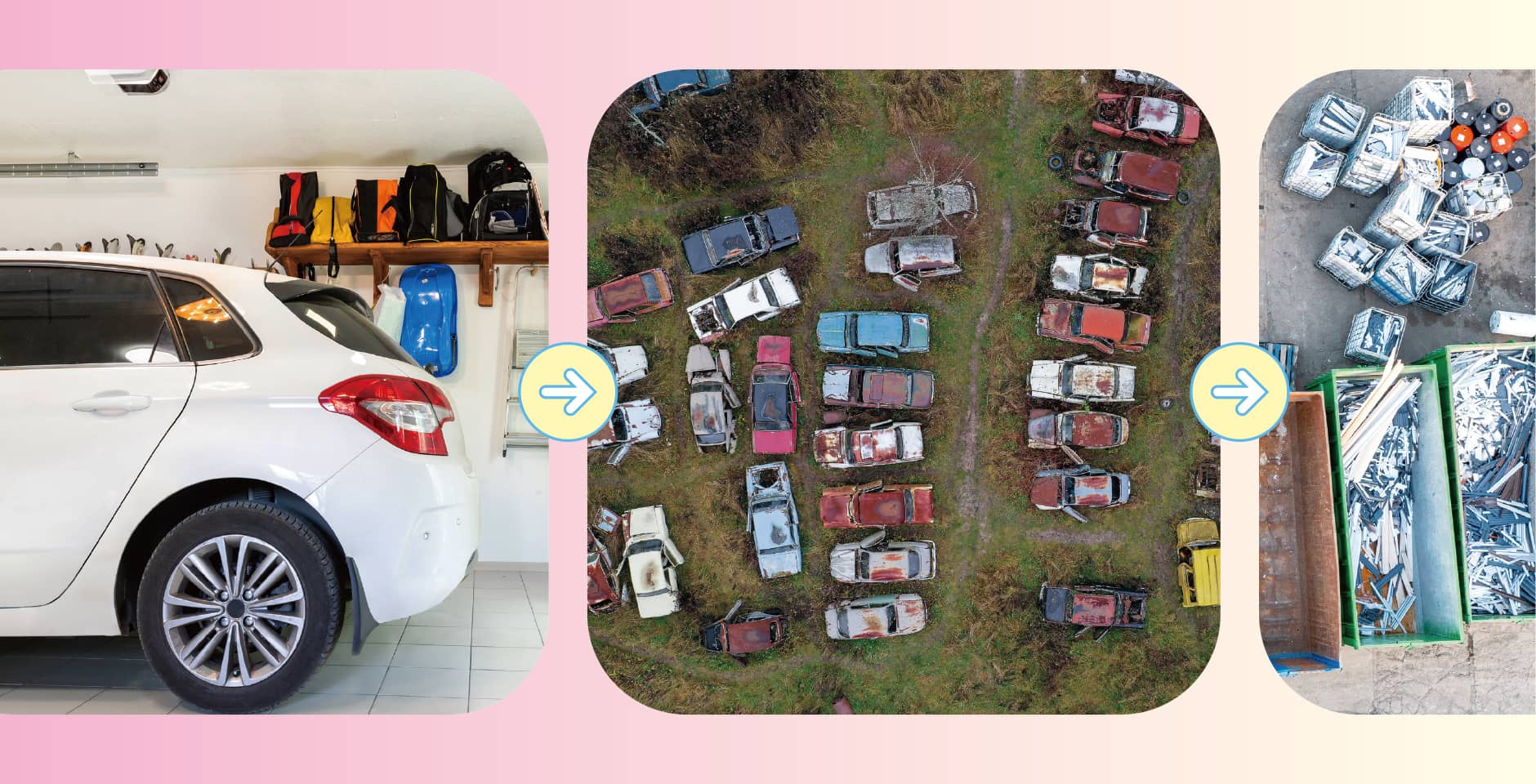Katsuyuki Nakano researches on Life Cycle Assessment (LCA), which quantifies the environmental impacts generated by products and services throughout their entire lifecycle. Additionally, Nakano is developing LCA techniques that incorporate social aspects alongside environmental impacts.
Assessing Environmental Impacts Through Lifecycle
Recycling of PET bottles is promoted as an effective means of reducing environmental impacts and enhancing resource circulation. However, in reality, collecting used PET bottles and transporting them to recycling facilities involves energy usage and CO2 emissions. Furthermore, washing, shredding, and melting down PET bottles in factories requires amounts of water and electricity.
“Every product and service have a ‘lifecycle’ from the extraction of raw materials, through manufacture, use, to disposal or recycling, and each stage generates some environmental impacts. It is necessary to consider the entire lifecycle to reduce the environmental impact,” explains Katsuyuki Nakano. LCA is a method for quantitatively assessing the environmental impacts through the product or service lifecycle. Amid the global push for decarbonization, businesses have used LCA to undertake and disclose information about their efforts to reduce environmental impacts.
According to Nakano, LCA procedures are outlined in the international standard ISO 14040: 2006 and widely used globally. Various assessment techniques are also developed and standardized depending on the industry. “However, lifecycles vary by product and service, and sometimes they cannot be measured by standard indicators or are assessed inappropriately,” Nakano continues. He utilizes diverse LCA methodologies and databases to pioneer innovative evaluation techniques, conducting case studies to gauge environmental impacts. Additionally, he plays a pivotal role in evaluating the CO₂ reduction effect within the “Ritsumeikan University Carbon Minus Project,” an initiative dedicated to promoting carbon sequestration through biochar.

Developing LCA Methods for New Materials and Technologies
Another area of focus in Nakano's research is conducting LCAs on emerging materials and technologies that lack established production or usage patterns, unlike already widely available products such as PET bottles and automobiles. “During development, the emphasis is often on functionality, leading to generous use of raw materials and energy. Naturally, this results in lower production efficiency and higher environmental impact than existing products. Instead of evaluating this, it is necessary to consider the production process once the new material has been finalized and can be mass-produced and to anticipate any environmental impacts once it enters the market,” he says.
Nakano is currently focusing on cellulose nanofiber, a new material made by breaking down wood and other materials into nano-sized fibers. It is extremely lightweight, robust, and stable, and its applications are being developed in various fields. “It is positioned as an environmentally friendly material derived from biomass, but whether it can be called such is under review. We are currently examining and developing LCA and other assessment methods,” he adds.
Conducting LCA that Includes Social Aspects, Avoiding Trade-offs
In his recent research, Nakano discusses two trends in corporate LCA. One is a trend towards collecting actual LCA data, moving from using generic data such as statistics to obtaining actual data from suppliers. Generic data does not reflect various initiatives by suppliers. By obtaining data from suppliers and collaborating within the supply chain, it is possible to reduce environmental impacts.
The other trend he notes is the expansion of evaluations beyond just CO2 emissions to other environmental aspects. “Even if we can reduce CO2 emissions, using rare resources in manufacturing or harmful chemicals that adversely affect ecosystems can create trade-offs. To prevent this, it’s important to ensure that unintended side effects are not occurring,” he emphasizes.
Furthermore, the scope of assessment expansion includes risk evaluations through the supply chain and social aspects such as child labor and human rights. “Social impacts involve a variety of factors. Looking at United Nations Environment Program (UNEP) guidelines, for example, the ‘Labor’ category includes freedom of association and the right to collective bargaining, child labor, working hours, forced labor, equality of opportunity and non-discrimination, health and safety, and many other assessment items,” Nakano explains.
In the course of examining various evaluation indicators and searching for indicators that can be used for decision-making, Nakano highlights “One interesting indicator that allows both environmental and social aspects to be considered at the same table is the Disability-adjusted Life Year (DALY).” DALYs are calculated from the number of years lost due to death and the number of years lost due to disability. They are used internationally as a health indicator that adds the degree of disability to the age at death. For example, for the “use of hazardous chemicals,” both environmental impact and human impairment can be calculated and compared using DALYs.
“However, efforts that result in trade-offs between environmental and social risks should be avoided. We need to explore measures that reconcile both aspects,” Nakano reiterates. Through LCA, he continues to seek pathways that will lead to positive outcomes for the environment, society, and the economy.